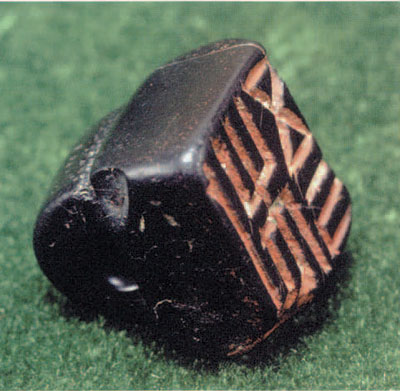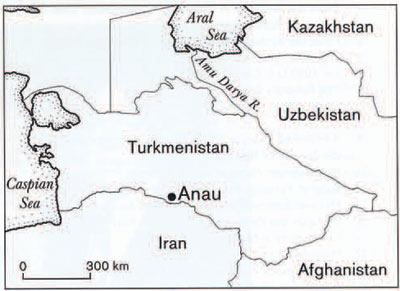
The University of Pennsylvania Museum Central Asia archaeology project has recently completed its third season of investigation at Anau depe in Turkmenistan. This region, part of the Soviet Union for most of the 20th century, was surrounded by ancient literate civilizations—China, the Indus valley, Mesopotamia, and Iran. Although the ancient societies of Central Asia also had cities, temples, palaces, irrigated landscapes, and vivid artwork, until recently they lacked evidence of number or writing systems.
At the small archaeological site of Ana, we uncovered this June the eroded top of a large room complex dating to the Bronze Age (2300 BC). We did not expect such a large and well-built construction. We spent the entire season excavating this building, whose walls, even now, stand more than meters high. The fill from these rooms contained finely made ceramics and many pieces of clay used to seal vessels or parcels. Within the building we found the remarkable engraved stamp seal pictured here.

This object has parallels only at the Central Asian site of Altyn depe. The engraved symbols or letters are unknown to us. At first we thought the inscription might be Harappa, from the Indus valley, but we now realize that it is unconnected with any of the writing systems in Mesopotamia, Iran, Harappa, or China. It most likely reflects a local symbolic system. Seals are used in the administrative system of an economy that needs to keep track of goods such as supplies for temples, barracks, or palaces. Even a small site like Anau has imposing architectural remains, and now we have in this seal evidence for Ana’s involvement in a managed system of distribution. This pattern of small and large sites having elite and bureaucratic functions is unique to the Central Asian Bronze Age.
